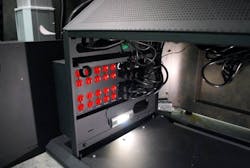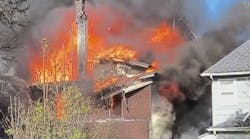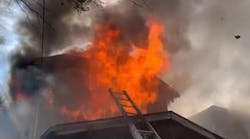For many years, dispatch console furniture was far from sophisticated. Steel frames and surfaces supported standardized racks where all equipment was mounted, and stationary Formica counters provided space to work. Yes, there were options, but these were often limited. More than one major manufacturer produced goods in a single standardized finish, so aesthetic choices effectively did not exist. But times have changed.
No longer utilitarian pieces of furniture, these enclosures now help integrate a variety of systems with each other—and with the dispatcher. Available in a wide range of finishes and various features, consoles are a critical component of any communications center. Equipping larger facilities can cost hundreds of thousands of dollars, yet console design often becomes a reactive rather than a proactive process. Regardless of the size of your project, carefully defining your needs will save money and provide long term operational solutions.
Most departments are familiar with the basic design, capacity, and function of fire apparatus. Just as concerns like tank size, pump capacity, and ground ladders have a bearing on specifying a new rig, a number of factors must also be considered when purchasing new consoles.
- What is the overall design? Many factors are included in this decision. For example, will the desktop be able to raise and lower to allow for operators to stand and sit? Will it have a single or a split surface? What type of safety features prevent pinch point injuries? What is the capacity of the lifting devices? Take a good look at areas like the desktop edge that are subject to contact and wear. Do your homework here.
- Are ergonomics addressed? Does design reduce excessive reaching and provide a comfortable line of sight to displays? Does the end product meet applicable standards in your community, such as Underwriter’s Laboratory, Business and Institutional Furniture Manufacturers Association and American Society for Testing Materials?
- What electronic communications equipment will be housed at each operating position? How many monitors, computers and telephones will a telecommunicator require? This impacts both space and wiring.
- Will processors and network equipment be located in the console, remotely, or will a mixture be employed?
- How will the monitors be mounted? Changing technology has removed the old and bulky Cathode Ray Tubes from the desktop and replaced them with flat panels that can be displayed in a number of ways. The total number of screens and their configuration are important issues.
- Will every position be the same? If not, what additional equipment will be required? Although there may be exceptions, consoles designed for call takers will normally not require radios while those for dispatchers will.
- What other mechanical devices will be included? Some common examples are switches for door security and lights, closed circuit TV monitors, and controls for personal comfort systems. The latter may include fans, air conditioning and/or heat, and may be independent of, or connected to the building’s Heating, Ventilation, and Air Conditioning system. A number of approaches are offered by vendors, so it’s important to find one that meets your needs.
- What specialized mounting will be required? Are there stand-alone hotlines, weather monitors, or any other equipment that needs its own space? Do you use portable radios or consolettes as part of a backup system? If so, where will they go? If formalized call answering routines such as Emergency Medical Dispatch and/or Emergency Fire Dispatch are utilized, don’t forget your cards. Whether a primary or secondary tool for screening, they need to be close at hand.
- What are your storage needs? Just as you can never have too many closets in a station, you cannot have too many places to put things in a dispatch center. And many of these things needing homes are either important to call handling, or inevitably add to clutter if not properly addressed. Some considerations on this long list include pencil drawers, space for books and manual resources, general supplies, and storage for personal belongings.
- What new features are available? If you haven’t seen the latest offerings, it’s good to familiarize yourself with industry trends, so that these can be reflected in your specifications. Recent focus has been placed on employee health and well-being, with mounts for tissues and hand sanitizer, ultra violet lights, and anti-microbial surfaces. Treadmills have also been designed for use in place of chairs.
Answering these questions will put you on the road to creating a coherent list of desired features. As with any purchase, warranty, service, and support must be considered, and planning ahead for future equipment changes will be beneficial. Communication console vendors can provide design files showing individual console features and their projected positions in the workplace, along with alternative layouts.






